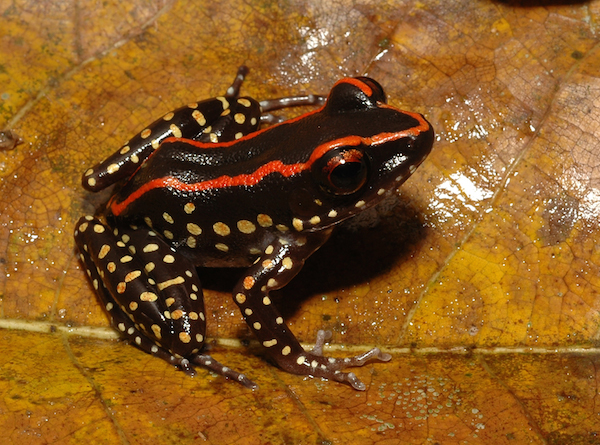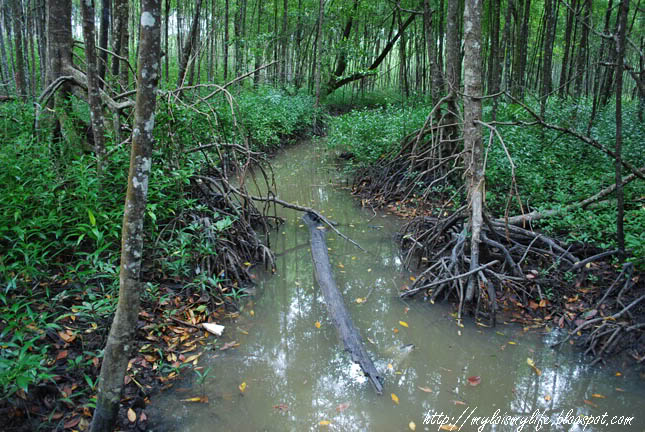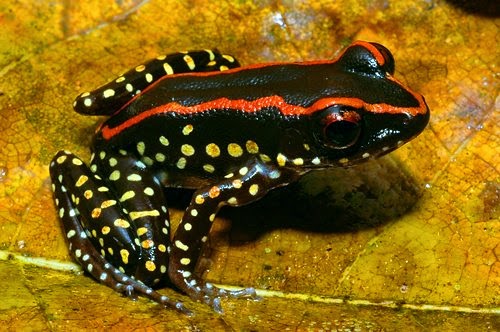Colourful New Frog Species Discovered In Peninsular Malaysia
It looks like an Australian aboriginal dot painting.
Researchers have discovered a new species of frog in a peat swamp in Peninsular Malaysia
Scientists have identified a new species of frog on the Malay Peninsula. The newly named Hylarana centropeninsularis was discovered in a peat swamp and genetic analyses revealed that it is evolutionarily distinct from its stream-dwelling cousins.
mongabay.comThe frog is named as Hylarana centropeninsularis. Centropeninsularis is a tribute to the Malay peninsular to raise awareness of the regions's biodiversity.
The researchers named their rediscovery centropeninsularis, referring to the frog’s home, the center of Peninsular Malaysia. According to Chan, this was part of an effort to raise awareness of the region’s natural significance.
mongabay.comKin Onn Chan, the scientist who discovered the frog, says "when it comes to biodiversity and conservation, a lot of attention has been given to Borneo, Indonesia and Indochina but Peninsular Malaysia has always been overlooked."
“I wanted to bring attention to Peninsular Malaysia,” he said. “When it comes to biodiversity and conservation, a lot of attention has been given to Borneo, Indonesia and Indochina but Peninsular Malaysia has always been overlooked.”
mongabay.comThe Hylarana centropeninsularis live in swamp ecosystems. Scientists suspect that there are many more new species in the Malaysian swamp and peat ecosystems waiting to be discovered.
Hylarana centropeninsularis has evolved to live in swamps, a tropical forest habitat characterized by waterlogged soil, which are home to many different species of animals. Chan and his team have spent years studying the biodiversity of swamps and suspect they may house many more new species awaiting scientific observation.
mongabay.com“Swamp/peat ecosystems are very unique and species that live there have adapted to a very specialized lifestyle,” Chan said. “Due to the insular nature of many swap/peat habitats, it would be hard for species to disperse away… hence limiting gene flow.”
mongabay.comIf you go camping and bump into the Hylarana centropeninsularis, don't worry. The frog is not poisonous.
Despite its bright colors, Hylarana centropeninsularis is not poisonous.
mongabay.com

